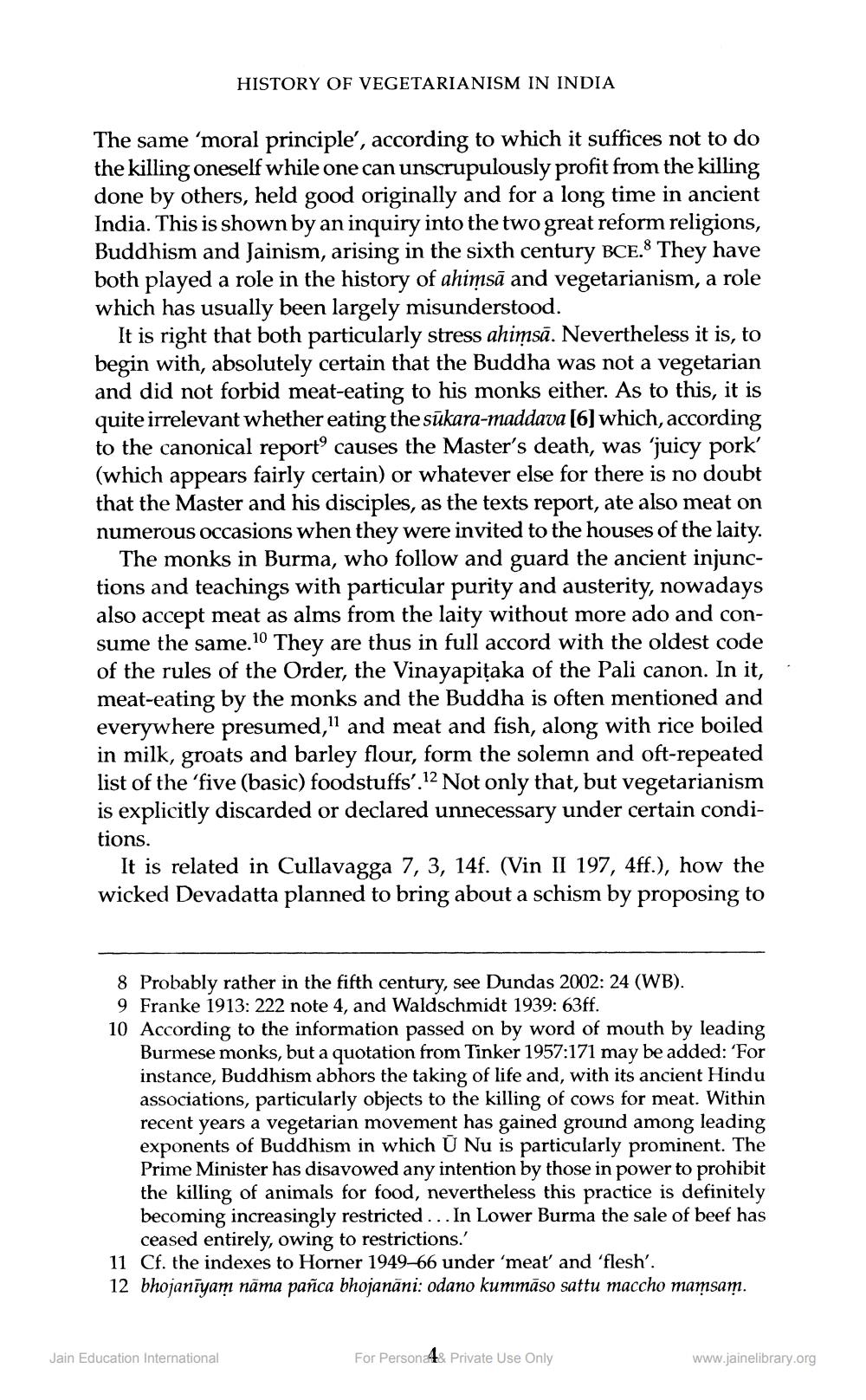________________
HISTORY OF VEGETARIANISM IN INDIA
The same 'moral principle', according to which it suffices not to do the killing oneself while one can unscrupulously profit from the killing done by others, held good originally and for a long time in ancient India. This is shown by an inquiry into the two great reform religions, Buddhism and Jainism, arising in the sixth century BCE. They have both played a role in the history of ahimsā and vegetarianism, a role which has usually been largely misunderstood.
It is right that both particularly stress ahimsā. Nevertheless it is, to begin with, absolutely certain that the Buddha was not a vegetarian and did not forbid meat-eating to his monks either. As to this, it is quite irrelevant whether eating the sūkara-maddava [6] which, according to the canonical report causes the Master's death, was 'juicy pork' (which appears fairly certain) or whatever else for there is no doubt that the Master and his disciples, as the texts report, ate also meat on numerous occasions when they were invited to the houses of the laity.
The monks in Burma, who follow and guard the ancient injunctions and teachings with particular purity and austerity, nowadays also accept meat as alms from the laity without more ado and consume the same.10 They are thus in full accord with the oldest code of the rules of the Order, the Vinayapițaka of the Pali canon. In it, meat-eating by the monks and the Buddha is often mentioned and everywhere presumed," and meat and fish, along with rice boiled in milk, groats and barley flour, form the solemn and oft-repeated list of the 'five (basic) foodstuffs'.12 Not only that, but vegetarianism is explicitly discarded or declared unnecessary under certain conditions.
It is related in Cullavagga 7, 3, 14f. (Vin II 197, 4ff.), how the wicked Devadatta planned to bring about a schism by proposing to
8 Probably rather in the fifth century, see Dundas 2002: 24 (WB). 9 Franke 1913: 222 note 4, and Waldschmidt 1939: 63ff. 10 According to the information passed on by word of mouth by leading
Burmese monks, but a quotation from Tinker 1957:171 may be added: 'For instance, Buddhism abhors the taking of life and, with its ancient Hindu associations, particularly objects to the killing of cows for meat. Within recent years a vegetarian movement has gained ground among leading exponents of Buddhism in which Ū Nu is particularly prominent. The Prime Minister has disavowed any intention by those in power to prohibit the killing of animals for food, nevertheless this practice is definitely becoming increasingly restricted ... In Lower Burma the sale of beef has
ceased entirely, owing to restrictions.' 11 Cf. the indexes to Horner 1949–66 under 'meat' and 'flesh'. 12 bhojaniyam nāma pañca bhojanāni: odano kummāso sattu maccho mamsam.
Jain Education International
For Person
Private Use Only
www.jainelibrary.org




